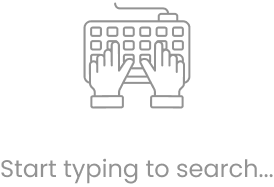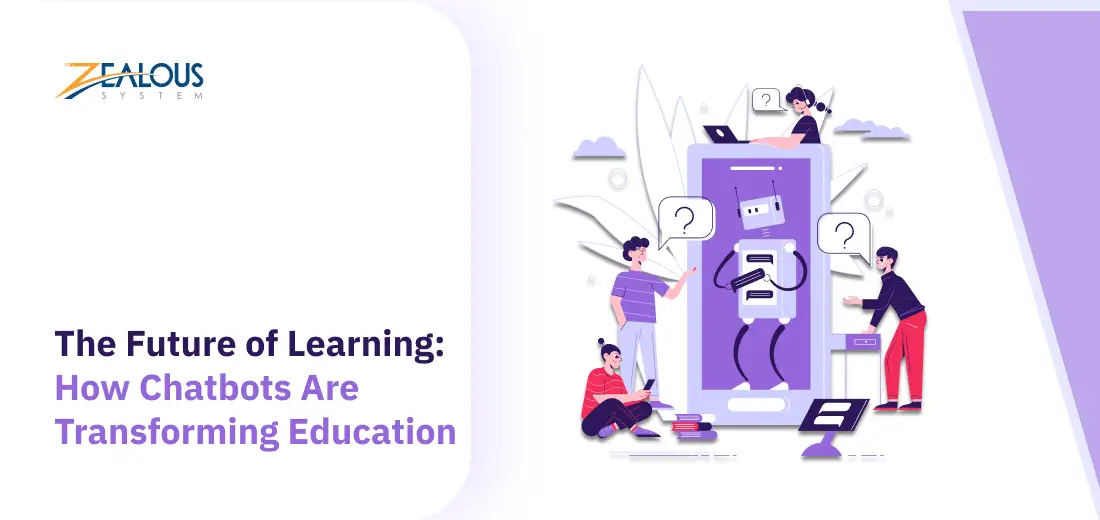


Technology is transforming education in many ways. With the rise of artificial intelligence (AI), chatbots are becoming an important tool in schools and universities worldwide.
Education is one of the top five industries using chatbots, and 58% of educational institutions agree that chatbots enhance their services.
Chatbots are improving communication between institutions and students, simplifying tasks, and offering personalized learning experiences. These AI-powered tools help create a more interactive and efficient learning environment.
Education chatbots help with various tasks, such as assisting teachers, grading assignments, retrieving alumni records, updating course materials, and simplifying the admissions process. Powered by AI, these tools are changing how schools, universities, and EdTech startups interact with students and staff.
Companies like Duolingo and Mondly use chatbots to improve student engagement and make learning faster and easier.
These chatbots mainly focus on improving communication in education, making learning more interactive and accessible. They provide real-time answers to student queries, guiding them through lessons and administrative tasks.
For example, a student can use a chatbot to check course updates, submit assignments, or receive personalized tutoring based on their learning style and speed. As a result, education chatbots are becoming essential in modern learning.
Chatbots are emerging as a powerful platform for educators, transforming how students learn and interact with knowledge. But what exactly makes chatbots so beneficial in education? Let’s go through the key advantages they offer:
Personalization in online education is essential for effective learning. Education chatbots play a key role by using machine learning to analyze student interactions and customize content. If a student struggles with a concept, the chatbot provides simplified explanations, extra resources, or slower-paced guidance.
This approach makes learning more engaging and easier to understand. Instead of a standard method for all, students receive content that suits their learning style and pace. For example, visual learners get infographic-based materials, while verbal learners receive detailed text explanations.
Chatbots continuously adapt as students progress, offering more advanced topics and challenges. This dynamic learning process keeps students engaged and helps them improve, providing benefits similar to a personal tutor without the high cost.
Imagine a student studying late at night before an exam and struggling with a difficult topic. In the past, they would have to wait until the next day for help, which could interrupt their study flow and cause stress. However, educational chatbots solve this problem by providing instant answers anytime, making learning smoother and more convenient.
Since chatbots are available 24/7, students can learn whenever it suits them. Whether they are studying at midnight or early in the morning, they can get the support they need. This flexibility helps students stay on track, leading to better learning experiences. For educational institutions, this can improve student satisfaction and academic performance.
Chatbots do more than just answer academic questions. They also help students find course materials, access library resources, and even connect with human tutors for more complex queries.
Chatbots make learning more engaging by creating interactive lessons. They use simulations, quizzes, and problem-solving exercises to encourage active participation instead of passive learning.
For example, a chatbot can turn a history lesson into an interactive story where students make decisions that shape the outcome. This hands-on approach helps students stay interested and understand how the lesson applies to real life.
Chatbots also simulate classroom discussions, encouraging students to explore different perspectives and think critically. When students actively engage with the material, they are more likely to understand and remember it.
Multilingual chatbots make education accessible to all by offering support in different languages. They help students overcome language barriers, ensuring no one is left out. This is especially useful in diverse classrooms where students speak various languages.
These chatbots assist international students by making learning materials easy to understand. They also simplify administrative tasks, such as registration and financial aid applications, by providing clear information in the student’s native language. This makes complex processes easier to navigate.
Education chatbots gather student feedback on learning materials and teaching styles. This ongoing data collection helps improve curriculum design, teaching methods, and student support services.
These insights go beyond numbers—they provide a clear picture of student engagement, challenges, and satisfaction. With this information, educational institutions can adjust their approach to better support students.
Using chatbots in education helps schools save money. They can handle routine tasks, reducing the need for administrative staff and lowering operating costs. This allows schools to invest more in better learning tools and facilities.
Chatbots also improve classroom activities by supporting teachers. They can offer extra tutoring or help with homework, reducing the need for after-school programs and additional staff.
AI chatbots can handle a large number of student interactions at the same time without losing efficiency. They are especially useful during busy periods like the start of a school year or exam season, as they provide quick and accurate information faster than humans.
Their ability to scale ensures that every student gets timely and personalized responses, which helps maintain smooth communication and student satisfaction. As educational institutions grow, chatbots can easily manage the increasing number of students without requiring more human staff.
Feedback plays an important role in education, and chatbots make it easier to collect and analyze this data. They gather real-time feedback from students and teachers during regular interactions, helping to measure the effectiveness of teaching methods and learning materials.
With continuous feedback, institutions can quickly adjust their educational programs to improve learning quality.
Chatbots are transforming education by improving the learning experience for students, simplifying administrative tasks for teachers, and offering helpful support services. Here are some key ways chatbots are being used in education:
Chatbots play a vital role in simplifying the admission process. Manually handling hundreds of applications with different requirements can be time-consuming and lead to errors. However, chatbots can automate many tasks, such as collecting student information and answering common questions about courses, fees, and deadlines.
For instance, a student can use a chatbot to check the eligibility requirements for a program, submit necessary documents, and track their application status. This automation reduces the workload for staff, improves accuracy, and speeds up the process, allowing administrators to focus on complex queries and personalized student support.
Teachers often spend a lot of time on repetitive tasks like taking attendance, grading quizzes, and scheduling appointments. These tasks can take their focus away from teaching. AI-powered chatbots can handle these duties, helping with classroom management and administrative work.
With AI support, teachers have more time to create engaging and interactive lessons, which improves education quality. It also allows them to give extra attention to students who need more help, making the learning experience better.
It is important to know how students feel about their classes and overall learning experience to make continuous improvements. Chatbots with sentiment analysis can track and assess student feedback in real time, giving teachers instant insights into their teaching effectiveness.
For example, a chatbot can review students’ written responses in a feedback form after a lecture to check if they understood the content or faced difficulties with certain topics. This instant feedback helps teachers adjust their teaching methods quickly, ensuring students grasp the material and receive the support they need.
Chatbots help students learn anytime, even after school hours. Whether it’s late at night or on the weekend, students can get instant help with their homework or questions.
If a student finds a math problem difficult, they can ask a chatbot for step-by-step help. The chatbot can provide hints, solve similar problems, or share useful learning resources.
With this constant support, students can understand lessons better and remember them for longer.
Educational institutions can use chatbots to simplify and improve library services. These chatbots help students and faculty check book availability, reserve materials, and get information about library hours and policies.
Students can use a chatbot to book a study room, check the due date of a borrowed book, or see if a specific journal is available. The process runs smoothly without needing staff assistance. This improves access to educational resources and makes the library more convenient for users.
Chatbots are very useful for learning new languages. They create natural conversations, helping students practice without stress. Students can talk to chatbots to improve their vocabulary, grammar, and pronunciation.
This interactive approach boosts confidence and fluency, making language practice more engaging than traditional study methods.
While chatbots offer significant potential, there are challenges to consider:

Educators can leverage chatbots to enhance student engagement, streamline administrative tasks, and deliver tailored educational content. This technical guide aims to provide educators with insights and best practices for building effective chatbots for educational purposes.
Before developing a chatbot, educators should first identify the needs and goals of their educational institution. This involves determining the target audience, defining what the chatbot will do, and understanding the learning objectives it aims to achieve.
Educators have many platforms and tools to build chatbots, each with unique features and capabilities. Some popular choices are:
Bot Frameworks: Tools like Microsoft Bot Framework, Dialogflow, and IBM Watson offer ready-made templates, natural language processing (NLP) features, and easy integration with other systems.
Custom Development: For more flexibility and control, educators can opt for custom chatbot development using programming languages like Python, JavaScript, or Java.
Effective educational chatbots use clear and natural conversational flows to guide users smoothly. Educators should plan conversation scenarios, identify user intents, and predict possible responses to create engaging and seamless interactions.
To maximize the utility of chatbots, educators should integrate them with existing learning management systems (LMS) and educational platforms. This allows the chatbot to access course materials, assignments, grades, and other relevant data, providing students with personalized assistance and support.
Natural language processing (NLP) plays a crucial role in enabling chatbots to understand and respond to user queries in a human-like manner. Educators can leverage NLP techniques such as intent recognition, entity extraction, and sentiment analysis to enhance the chatbot’s conversational capabilities.
Chatbots can get better over time with the help of machine learning algorithms. These algorithms allow chatbots to learn from user interactions and feedback. Educators can train chatbots using large datasets of educational content to improve their accuracy in giving responses and recommendations.
Educational chatbots deal with sensitive student information, so keeping this data private and secure is crucial. Teachers and schools should use strong security measures like encryption, access controls, and regular security checks to safeguard data and follow privacy rules.
Educators must test a chatbot’s functionality, usability, and performance carefully before using it in a live educational setting. Conducting user tests, beta trials, and feedback sessions can highlight areas that need improvement and guide regular updates for the chatbot.
Chatbots hold immense potential to transform education by personalizing learning, providing 24/7 support, and improving engagement. With the expertise of education software development companies, these technologies can be further refined and optimized to meet the unique needs of educational institutions.
As chatbot development evolves and educators leverage their possibilities, they can play a significant role in creating a more effective and inclusive learning experience for all students.
Our team is always eager to know what you are looking for. Drop them a Hi!
Comments